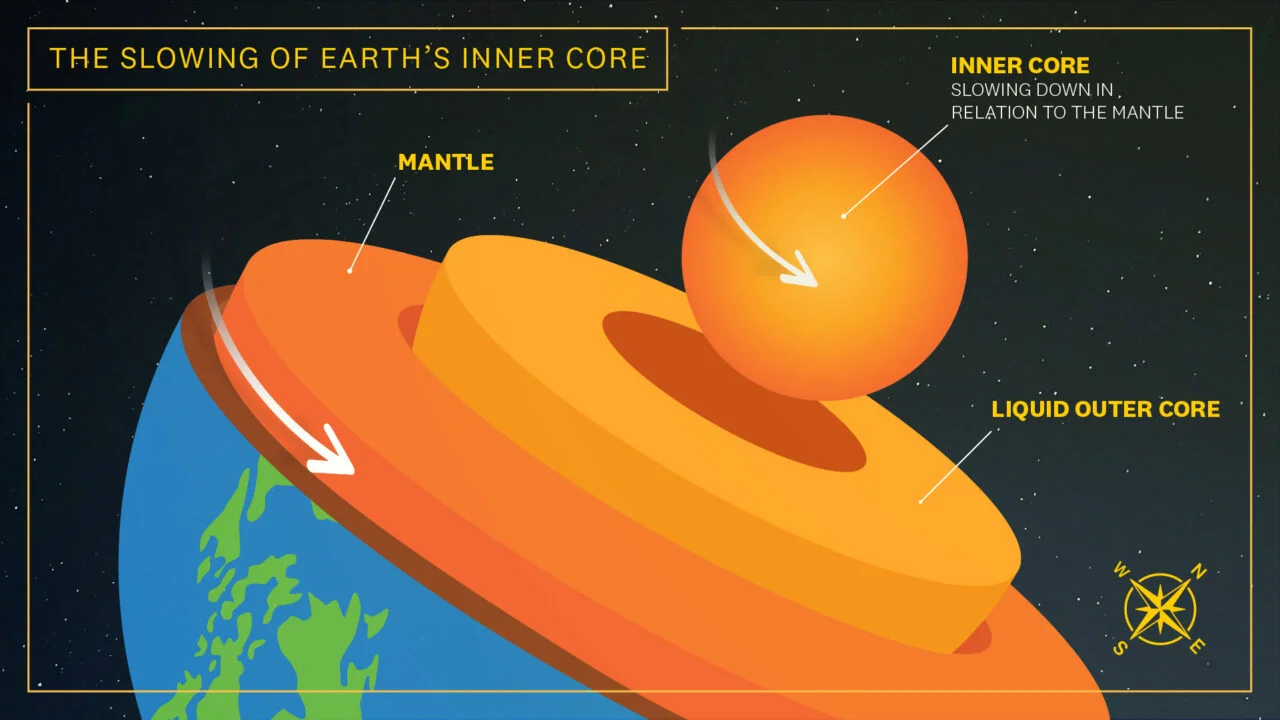The rotation of Earth's inner core is slowing down
Decades worth of seismic data confirms the rotation of Earth's inner core is moving slower than the planet's surface.

The rotation of Earth's inner core began to slow down more than a decade ago, altering the length of our days by fractions of a second.
Researchers from the University of Southern California (USC) created renderings of the inner core's movement using seismic data recorded from various earthquakes and nuclear tests, both of which send vibrations through the planet. By measuring the speed and interaction of the seismic waves within the Earth's layers, researchers can estimate the position and movement of the inner core.
The study confirms that since around 2010, the Earth's inner core has been slowing down, or backtracking, compared to its speed in previous decades; it is also moving slower than the Earth’s surface, according to a statement from USC.
"The inner core had slowed down for the first time in many decades," John Vidale, co-author of the study and a professor of Earth Sciences at USC, said in the statement. "Other scientists have recently argued for similar and different models, but our latest study provides the most convincing resolution."
Related: Earth's layers: Exploring our planet inside and out
The Earth's inner core is a hot, dense and solid ball made of iron and nickel, located 3,200 miles (5,150 kilometers) below our feet. It is surrounded by a liquid iron-nickel outer core, encased by a solid rocky mantle. The new study shows that the inner core's slowing speed is caused by convection within the liquid iron outer core, which sustains Earth's magnetic field, and the pull of gravitational forces in the overlying mantle.
The researchers analyzed seismic data recorded during 121 repeating earthquakes that occurred around the South Sandwich Islands in the South Atlantic between 1991 and 2023, as well as data from several nuclear tests around the globe, to reach their conclusions.
Breaking space news, the latest updates on rocket launches, skywatching events and more!
In theory, repeating earthquakes would produce identical seismograms because they occur in the same location. That's why comparing the seismic data from different points in time can reveal changes beneath the planet's surface. Subtle changes in how long it took for the seismic waves to travel through the Earth at different times in the planet's history revealed the inner core’s slowdown. While this change may alter the length of a day by fractions of a second, it won’t be noticeable, the researchers said.
Their findings were published June 12 in the journal Nature.
Join our Space Forums to keep talking space on the latest missions, night sky and more! And if you have a news tip, correction or comment, let us know at: community@space.com.

Samantha Mathewson joined Space.com as an intern in the summer of 2016. She received a B.A. in Journalism and Environmental Science at the University of New Haven, in Connecticut. Previously, her work has been published in Nature World News. When not writing or reading about science, Samantha enjoys traveling to new places and taking photos! You can follow her on Twitter @Sam_Ashley13.
